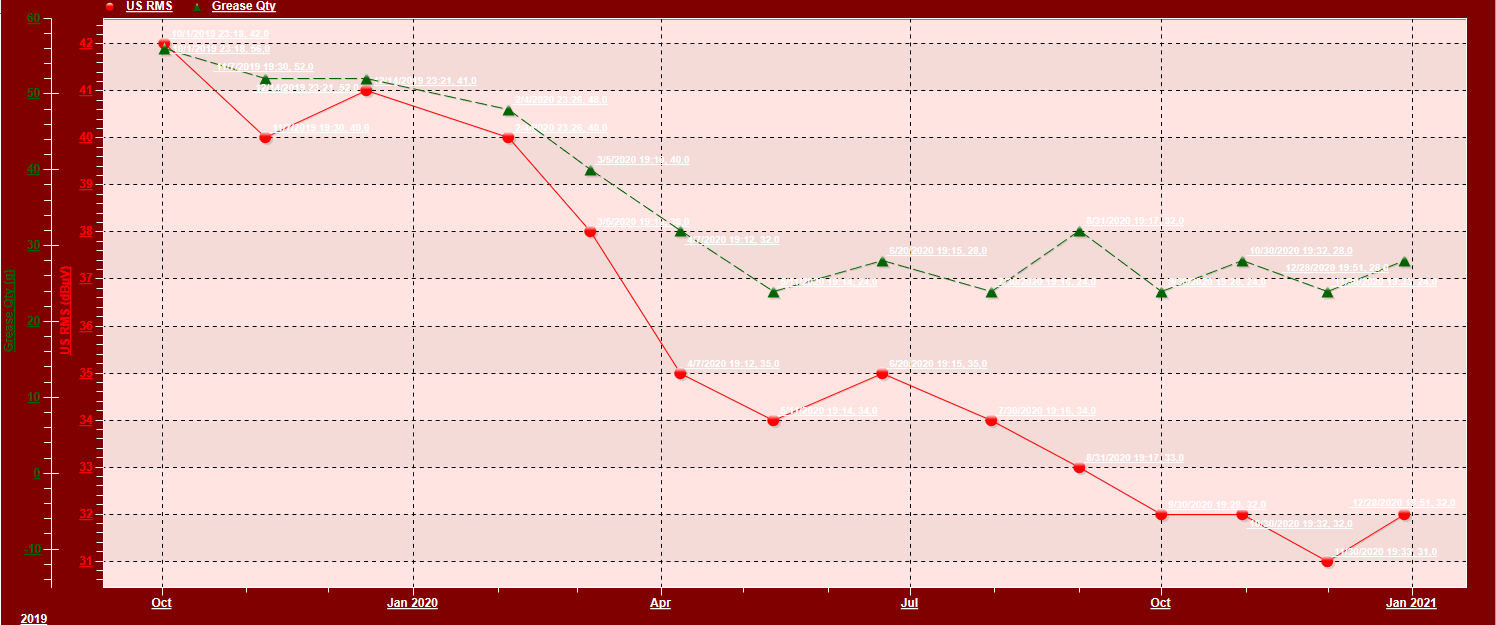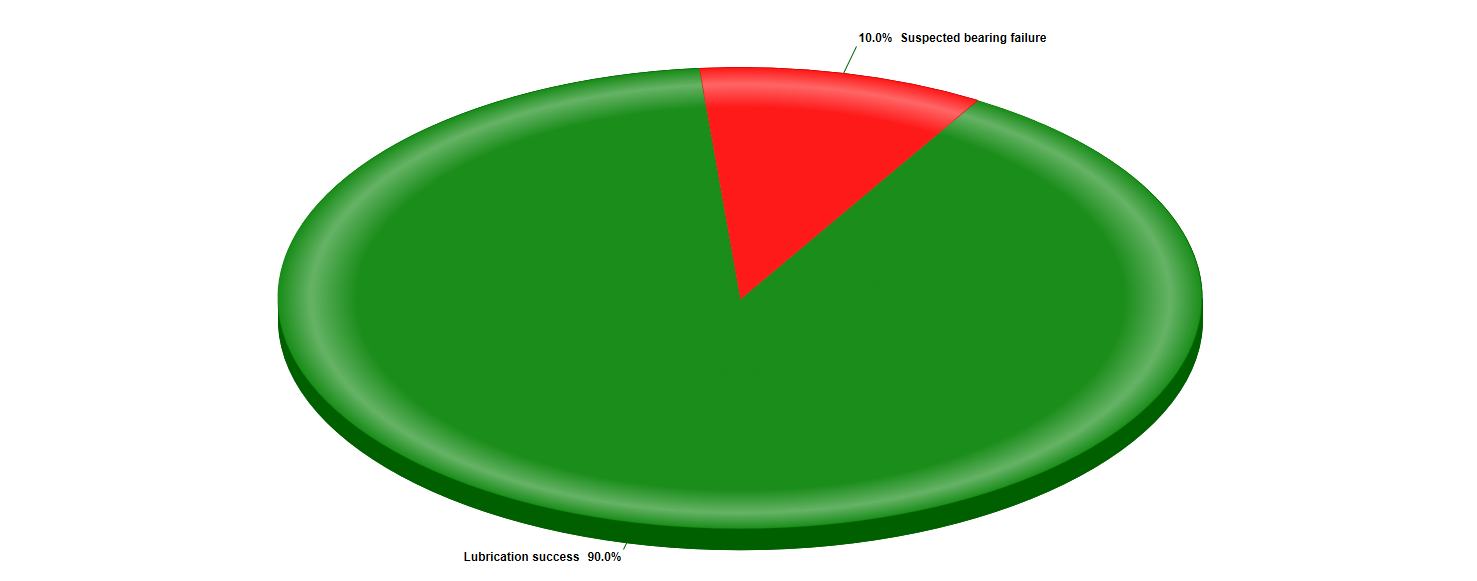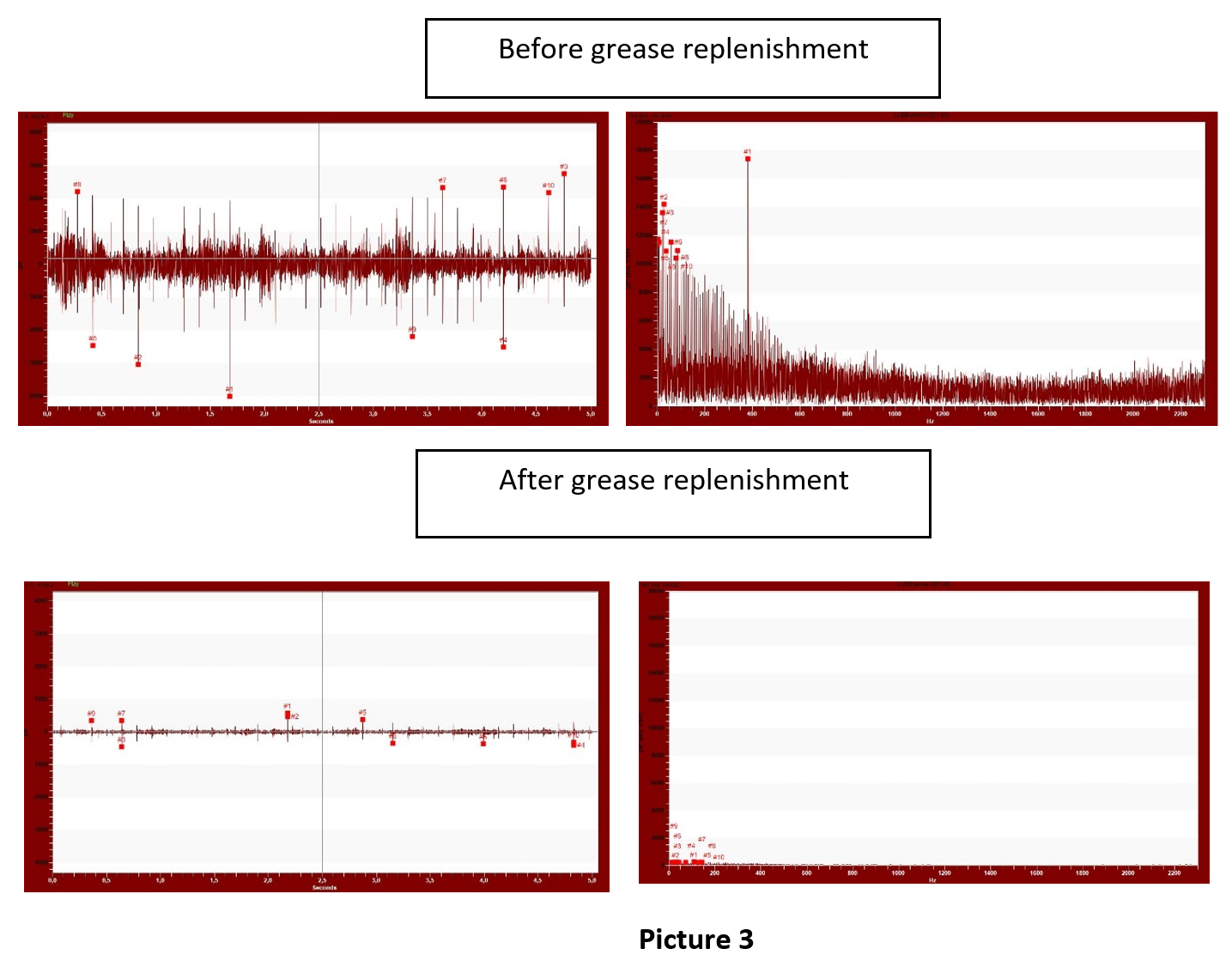Back in the fourth quarter of 2019, SDT team assisted LUBExpert implementation (parallel to Condition Monitoring implementation) in wastewater facility in SE Europe, with primary target of improving lubrication practice on 180 assets (more or less 700 bearings).
This task might sound simple and straightforward, still it highly depended on many real condition facts. A relatively small team was working on several improvements at the same time: Condition Monitoring (CM) and Lubrication. A small team, in this case, means: two technicians engaged in CM activities, one grease technician and the maintenance manager playing the role of reliability engineer, lube manager, CM engineer as well as many others. Certainly, it was not an easy task for the team, and certainly it was not as it should have been, but that was the reality and what was approved by decision makers.
Obviously, that was one of those situations when management gives you less than you need to success promising to give you more once you succeed. Catch-22, but it is something we face often, making the process more challenging and rewarding.
To make it happen, our grease technician was trained to the level of LUBExpert Strategist, understanding Why job needs to be done, What needs to be done and How, and being able to perform entire setup, execution and reporting. Proper selection of lubricants, controlled purchase process, proper storage, cleanliness… all was included in process, of course. Once started, the gained experience resulted in growing confidence, increased work efficiency, well organized work orders and smooth execution. Once grease guy, now LUBExpert Strategist.
However, there was another aspect of implementation that was highly important for the success of the entire program. Do more than required with less than needed.
Critical point of implementation was the proper positioning of each department (CM and Lube) and interdepartmental cooperation, considering available resources. The approach applied (knowing LUBExpert’s capabilities) was to erase departmental fences and silos and set it more like an army formation:
- first line of defence – grease bearings right and eliminate mayor cause of failures;
- scouting – frequent data collection and trending, share data and locate anomalies;
- light calvary – collect dynamic (TWF, FFT) data for analytic purposes;
- heavy artillery – deeper analysis, problem definition, root cause definition (and elimination).
Lots of work and lots of tasks for a small team.
As usual, Pareto’s 80:20, fits in from all angles. 80% of problems come from 20% of activities, 20% of problems require 80% of available time to be analysed … and so on.
Although it may sound ambitious, we assigned first two tasks to our Lube team/technician:
- First line of defence – Lubrication department job, for sure
- Scouting – CM job, normally
Some call it a burden too big, some think it is impossible, we consider it integral part of LUBExpert strategy. Whoever is taking care of Lubrication, has his hands-on assets more frequently than anyone else in the Reliability team, and has the most interactive relationship with the asset. LUBExpert Specialist (in this case also Strategist) is collecting data for Lubrication purposes, has an opportunity to monitor and trend data before and after replenishment condition, possess the data collected and analysed during replenishment.
Knowing that, LUBExpert Strategy easily takes care or the first two tasks, bringing huge benefit to CM team by giving them the most valuable data, and consequently time! More available time for deeper analysis, problem definition, root cause search.
At the end of the first year of the LUBExpert program implementation:
- Lube technician took care of 35 – 40 bearings per day (per shift)
- That includes work task preparation, data collection, on-site analysis based on triggered alarms, LUBExpert guided grease replenishment, data overview and possible strategy corrections, and reporting.
- All bearings showed an excellent response (as one in the picture 1 below), operating at minimum friction and wear level:

Picture 1
- Process statistics (as shown in picture 2) showed high level of performance, correct lubrication practice and strategy settings, as well as additional observations and condition assessments:

Picture 2
- Q4 2020 compared to Q4 2019 shows significant decrease of bearings related failures in rotating assets;
- Q4 2020 shows no Lubrication related failures, except ones inherited from previous period;
- Full traceability and detailed data about each process achieved;
- Data shows that most of the previously used interval and quantity plans were incorrect;
- LUBExpert Strategy was successfully implemented.
In addition:
- Lube technician delivered 12.500 Ultrasound readings to CM team, including static trend graphs, triggered alarms, before and after grease replenishment values, all relevant events, all taken actions;
- Lube technician delivered 18 “Suspected bearing failure” warnings to CM team;
- Lube technician delivered 10 “Safety risk” warnings to everyone’s attention.
First year of implemented program can now be safely declared as successful. As usual, once you succeed, there comes the question: “What’s next?”
For Lube team, “next” equals expanding the program to the entire plant and sustaining top performance.
For CM team, “next” equals covering more assets, covering more failure modes, digging deeper into analysis to define a root cause, suggesting corrections to remove root cause, and suggesting improvements.
So, first, we need to look at the accomplished results and assigned tasks, once again emphasising the necessity to remove departmental division and silos mindset and conclude that both tasks are actually one. The question that we really needed to answer was: “How can Lube team further assist CM team to accomplish more with less or same resources?”
Again, more work on Lube tech shoulders?
Not really, the answer is: LUBExpert Dynamic.
LUBExpert Dynamic is equipped with an additional feature: collects Dynamic data (TWF, FFT) while performing usual LUBExpert work. No additional time needed, no additional training needed, no additional efforts, only additional benefits. Those benefits are exactly what CM team needs to accomplish.
Now, out of four army style operating segments, we can add one more to Lube team without creating any additional stress on our Lube tech, but freeing huge amount of time for our CM team:
- First line of defence – Lubrication department job, for sure
- Scouting – CM job, normally
- light calvary – collect dynamic (TWF, FFT) data for analytic purposes
What does it mean for Lube tech during his daily work? Absolutely nothing.
Dynamic data is collected in background.
Remember this from above?
- Lube technician delivered 12.500 Ultrasound readings to CM team, including static trend graphs, triggered alarms, before and after grease replenishment values, all relevant events, all taken actions.
Now add same amount of Time Waveform and Spectra, that normally requires the work of an additional technician.
One more task off the shoulders of CM team and a huge opportunity for them to increase coverage, dig deeper and have more time for analysis and problem solving.
Each Condition Monitoring team knows exactly how big this benefit is and how it improves CM efficiency.
Here is how it looks like in first week of implementation. Bearing successfully greased with declared condition as “Suspected bearing failure”, TWF and Spectra collected before and after grease replenishment (picture 3):





